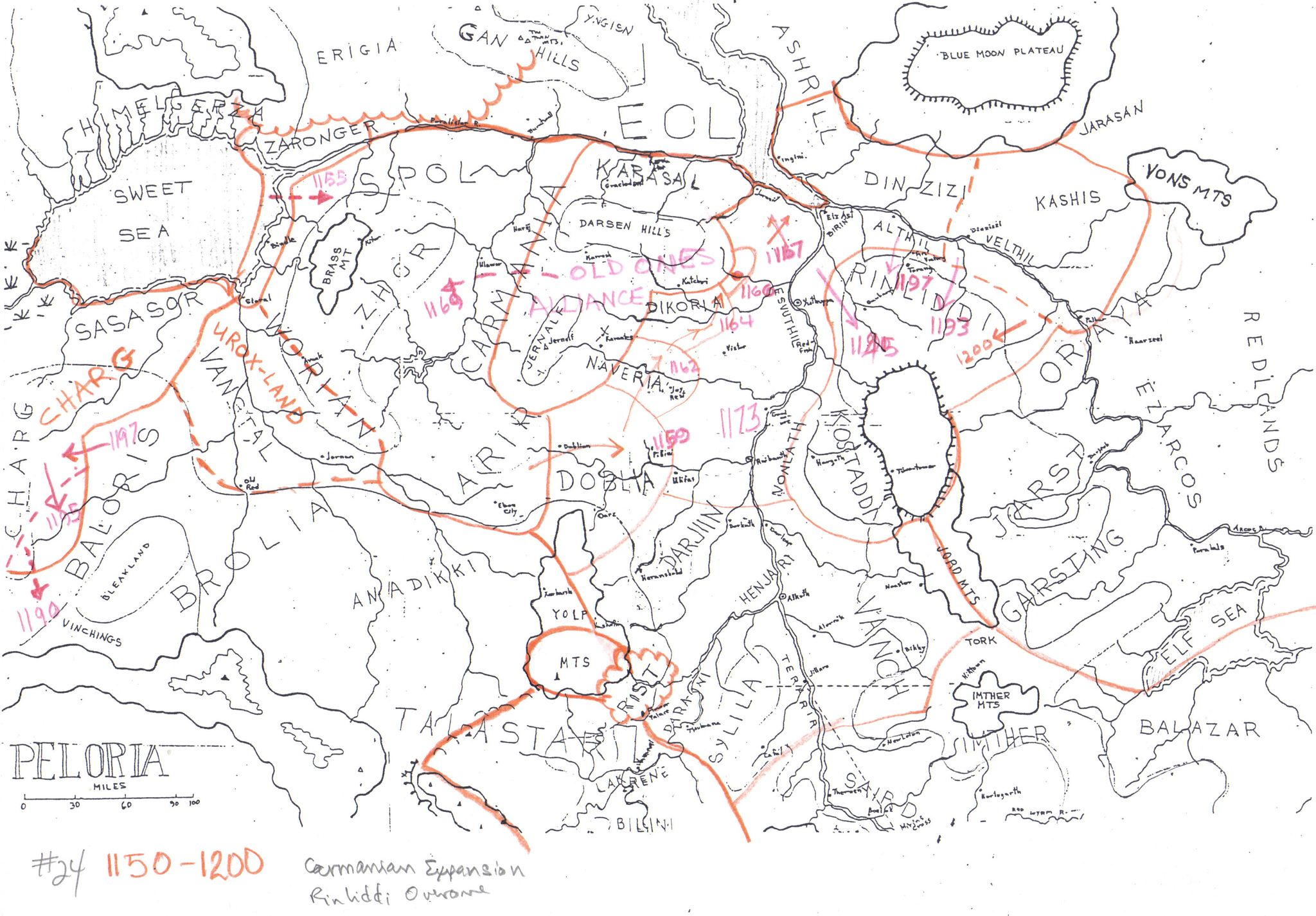When you think about the Lunar Empire, remember it is built on ancient foundations. The Lunar Empire is the most recent (and most successful) dynasty ruling the broad Pelorian grasslands, but there have been at least eight previous dynasties in historical memory, and three mythic dynasties.
Like previous dynasties, the Lunar Empire gained its legitimacy from divine descent (in this case the Red Goddess and Yelm). Its initial institutions were a combination of traditional Yelmic and modern Lunar priesthoods with some Carmanian innovations from the brief period of Carmanian rule over Peloria (1168-1233). This was all ground down during the wars with Sheng Seleris, and needed to be rebuilt after 1460.
The modern Lunar Empire is now self-consciously Lunar – its long struggle with Sheng Seleris made the Red Emperor and the Lunar Way a popular rallying point. But of course, “modern Lunar” also includes Solar deities such as Yelm, Nysalor, Gorgorma, and Entekos. The Red Emperor rarely needs to appeal to previous dynasties (other than the mythic Yelm dynasty) for legitimacy – he earned it the hard way, in his century-long struggle with the Pentans. Similarly, the Yelm cult looks to Yelm and the Red Emperor, rather than the Khordavu or Erzanestyu dynasties.

![]()
![]()
Something else – at some 375 years, the Lunar dynasty has already lasted much longer than the Ptolemies, the Fatimids, or the Tangs. They are either the second longest-lasting or the long-lasting Pelorian historical dynasty (it all depends on whether you consider the Khordavu dynasty as lasting until 700 or until on 431).
Remember Monsoon IS a good and real Yelmic Emperor. In fact, it is easy to argue that he is THE MOST proper and real Yelmic Emperor in history, and certainly the one who best embodies Yelmic ideals of legitimacy and authority. In fact, his only really challenger for the title is Sheng Seleris.
One way of thinking about Lunar history is dividing it into four periods:
- Foundation and initial expansion (1222-1360). This lasted about a century and a half. The Carmanian Empire was overthrown and Lunar rule spread across Peloria, reaching the edge of Dragon Pass. Revolts by traditionalists and barbarians were put down.
- Struggle and survival (1360-1460). The Lunar army is destroyed at the Battle of Falling Hills, Pentan nomad tribes invade, and the empire is all but conquered by Sheng Seleris. A few strongholds hold out and the Red Emperor manages to defeat Sheng Seleris.
- Rebuilding and internal focus (1460-1550). The nomads are forced out and Lunar rule over Peloria is reestablished, new cities build, farmland reoccupied, etc. New priesthoods and new religious movements established. This is a period of largely internal growth, with no significant external threats after 1506.
- Expansion and conquest (1550-1625). The Lunar Army conquers Dragon Pass, and expands into Prax and the Holy Country, albeit with much violence. Growth of bureaucracy and established priesthoods.
